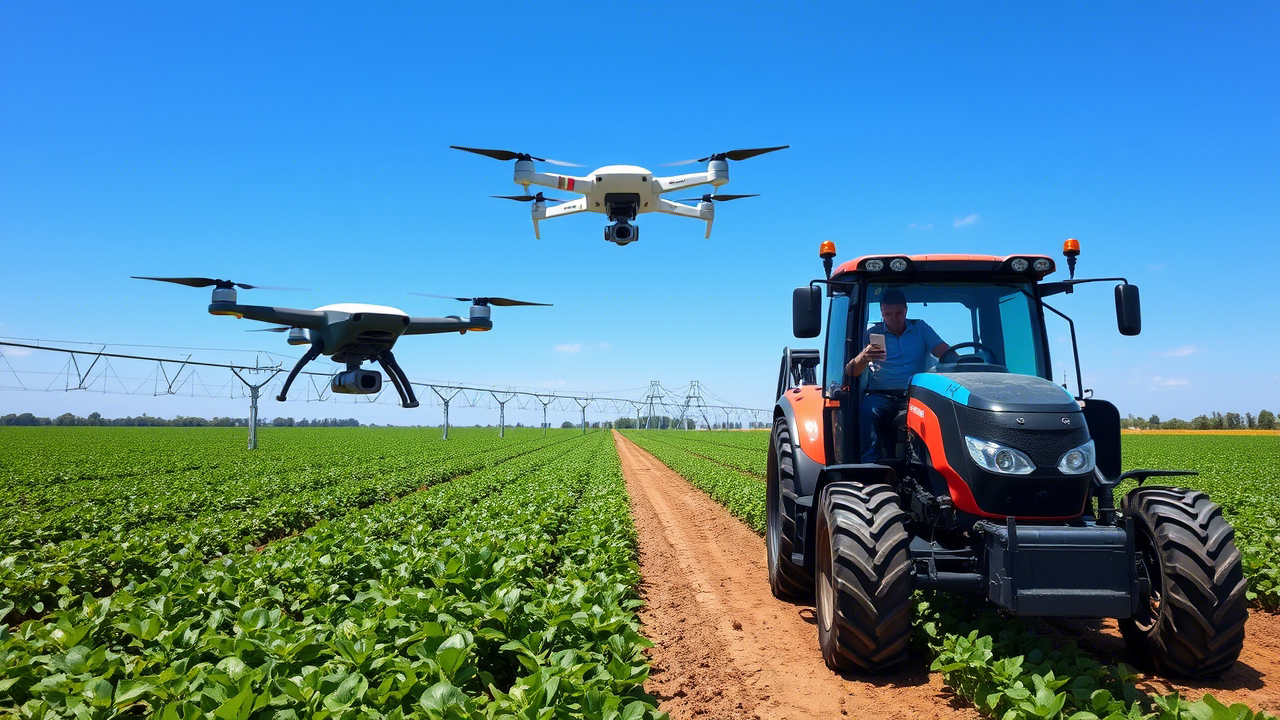The Role of Technology in Agriculture: Cultivating a Smarter Future
In an era where innovation touches every aspect of our lives, agriculture is no exception. Technology has quietly woven itself into the fabric of farming, transforming age-old practices into efficient, sustainable, and data-driven processes. Far from replacing the timeless connection between farmer and land, modern tools are enhancing it—helping growers meet the demands of a growing population while nurturing the environment.

Precision Farming: Working Smarter, Not Harder
One of the most significant advancements in agriculture is precision farming. By leveraging GPS, sensors, and data analytics, farmers can now monitor soil conditions, moisture levels, and crop health with remarkable accuracy. Drones and satellite imagery provide real-time insights, allowing for targeted irrigation, fertilization, and pest control.
This shift from broad, uniform treatments to precise, localized care means fewer resources are wasted. Water usage becomes more efficient, chemical inputs are minimized, and yields improve—all while reducing environmental impact.
Automation and Robotics: The Quiet Helpers
From self-driving tractors to robotic harvesters, automation is easing the physical burden on farmers. Machines equipped with AI can now plant seeds, weed fields, and even pick delicate fruits without human intervention. These technologies address labor shortages and allow farmers to focus on strategic decision-making rather than repetitive tasks.
Robotic milking systems in dairy farms, for example, enable cows to be milked on their own schedule, improving animal welfare and operational efficiency. Such innovations highlight how technology can harmonize with nature rather than disrupt it.
The Rise of Smart Greenhouses and Vertical Farms
As arable land becomes scarcer, controlled-environment agriculture (CEA) offers a sustainable alternative. Smart greenhouses use IoT (Internet of Things) sensors to regulate temperature, humidity, and light, optimizing growth conditions year-round. Vertical farming takes this further by stacking crops in urban settings, reducing transportation costs and bringing fresh produce closer to consumers.
These methods use significantly less water and land than traditional farming, making them ideal for regions with harsh climates or limited space.
Blockchain for Transparency and Trust
Beyond the field, technology is reshaping the agricultural supply chain. Blockchain enables secure, transparent tracking of food from farm to table. Consumers can verify the origin, quality, and sustainability of their purchases, while farmers receive fairer compensation by cutting out unnecessary middlemen.
Challenges and Thoughtful Adoption
While technology offers immense benefits, its adoption comes with challenges. High costs, digital literacy gaps, and concerns over data privacy can hinder small-scale farmers. Ensuring equitable access to these tools is crucial to prevent a widening divide between large agribusinesses and family farms.
Moreover, technology should complement—not replace—traditional knowledge. The wisdom of generations of farmers, combined with modern innovations, creates a balanced approach to sustainable agriculture.
A Future Rooted in Harmony
Technology in agriculture is not about turning farms into factories; it’s about empowering farmers to work more efficiently and sustainably. By embracing these tools thoughtfully, we can cultivate a future where food production meets global needs without compromising the health of our planet.
In the quiet hum of a sensor-monitored field or the steady precision of an autonomous harvester, there’s a promise—a promise of a world where farming remains deeply human, yet infinitely smarter.

